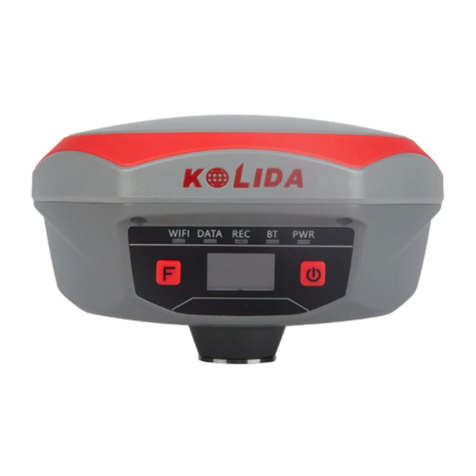Kolida KTS440 Series User manual
Other Kolida Measuring Instrument manuals
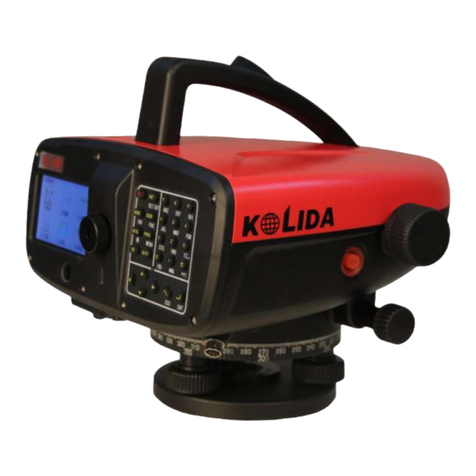
Kolida
Kolida KL-03 User manual

Kolida
Kolida DL-200 User manual
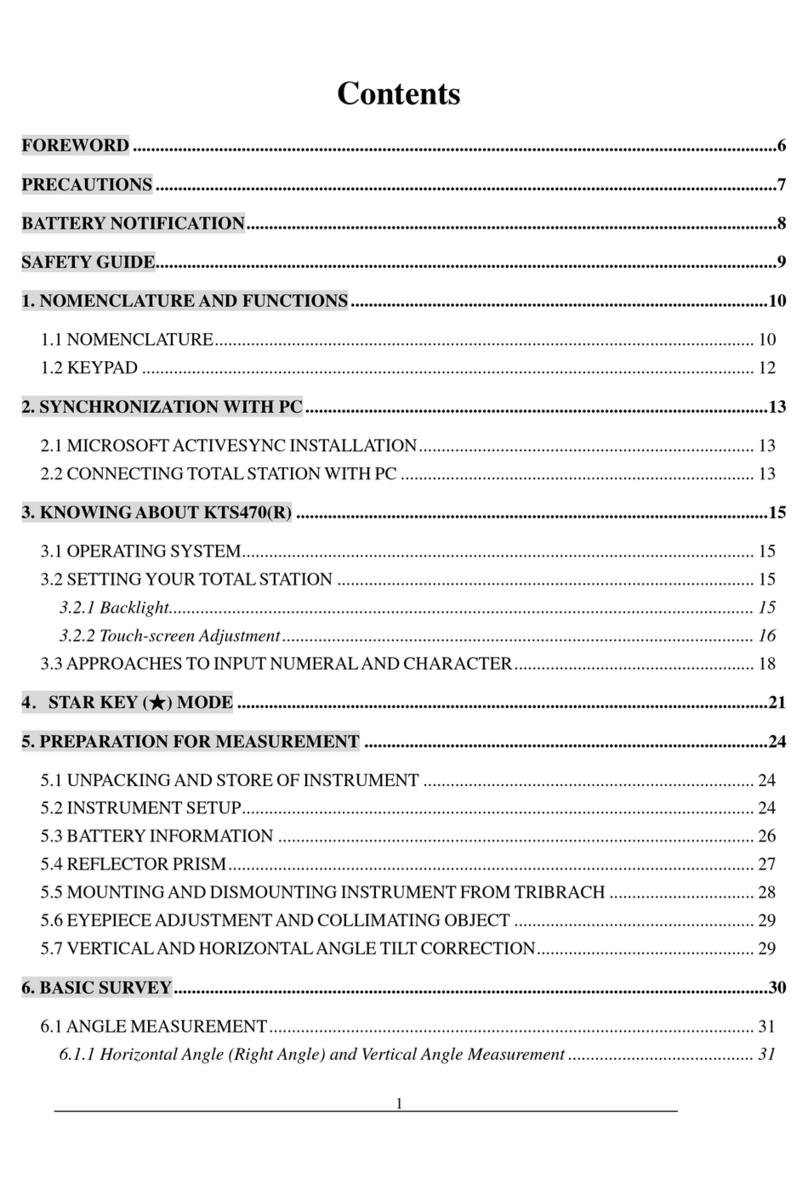
Kolida
Kolida KTS-470 R Series User manual
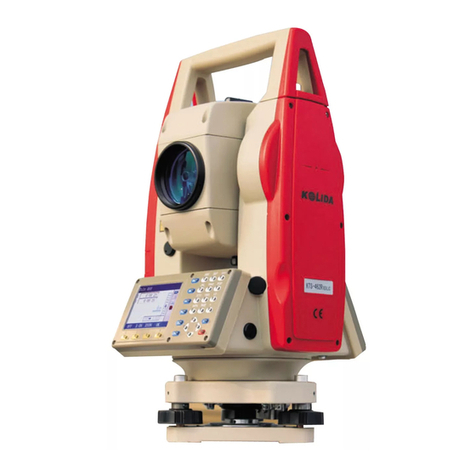
Kolida
Kolida Total Station KTS-462R10L User manual

Kolida
Kolida KL-15 User manual
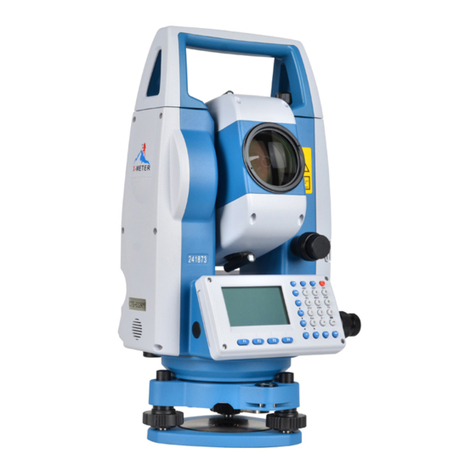
Kolida
Kolida CTS-632R10M User manual

Kolida
Kolida K3 IMU User manual

Kolida
Kolida KTS-442UT Series User manual
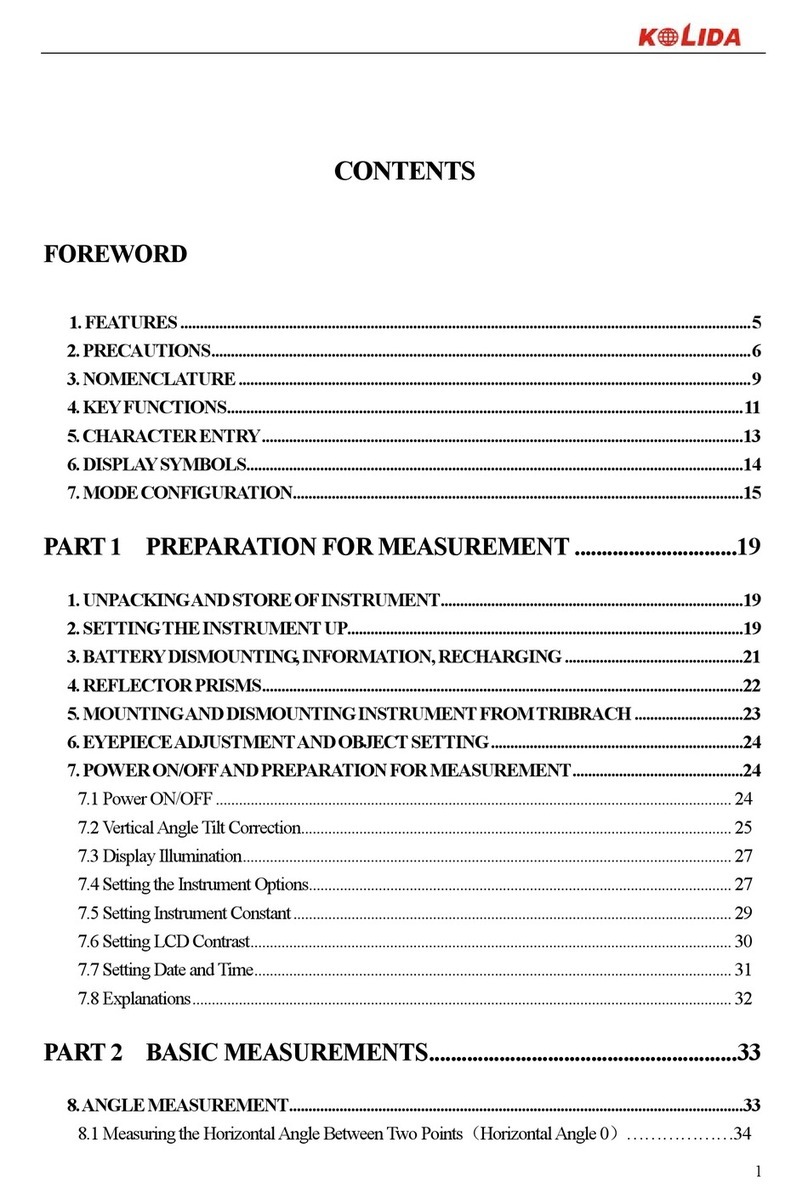
Kolida
Kolida KTS440 R Series User manual
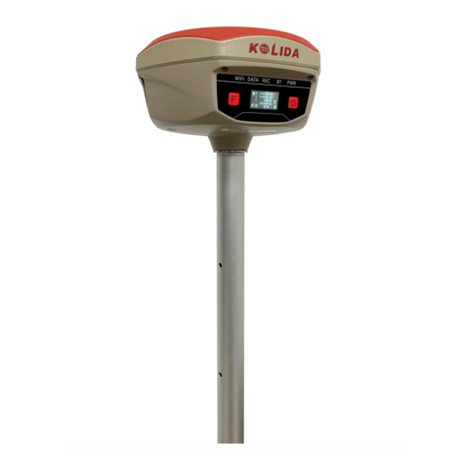
Kolida
Kolida K20s User manual
Popular Measuring Instrument manuals by other brands

Powerfix Profi
Powerfix Profi 278296 Operation and safety notes

Test Equipment Depot
Test Equipment Depot GVT-427B user manual

Fieldpiece
Fieldpiece ACH Operator's manual

FLYSURFER
FLYSURFER VIRON3 user manual

GMW
GMW TG uni 1 operating manual

Downeaster
Downeaster Wind & Weather Medallion Series instruction manual

Hanna Instruments
Hanna Instruments HI96725C instruction manual

Nokeval
Nokeval KMR260 quick guide

HOKUYO AUTOMATIC
HOKUYO AUTOMATIC UBG-05LN instruction manual

Fluke
Fluke 96000 Series Operator's manual

Test Products International
Test Products International SP565 user manual

General Sleep
General Sleep Zmachine Insight+ DT-200 Service manual
